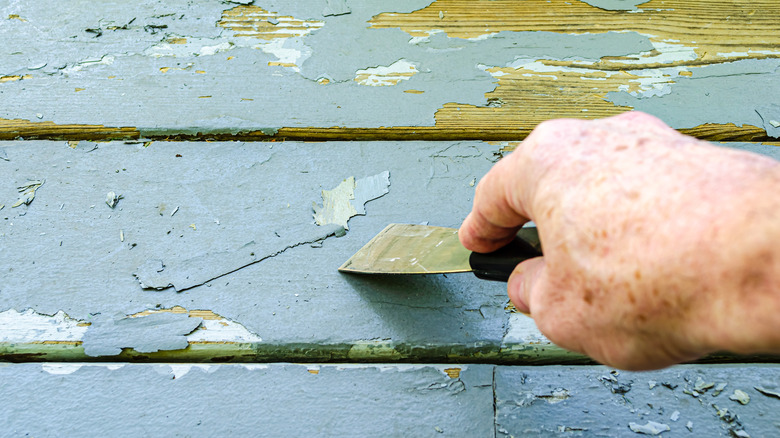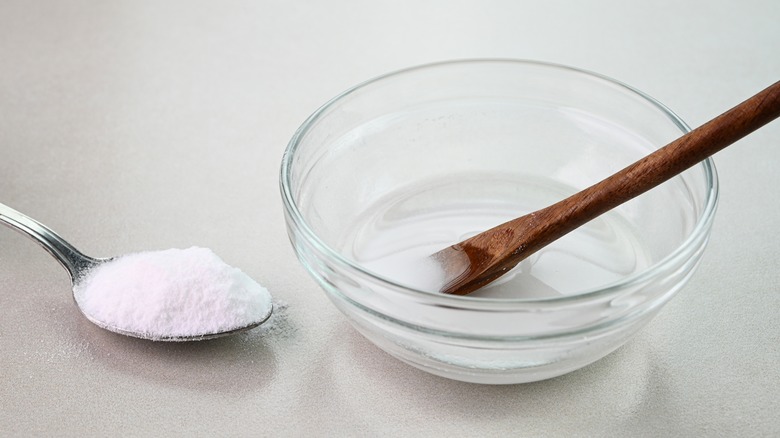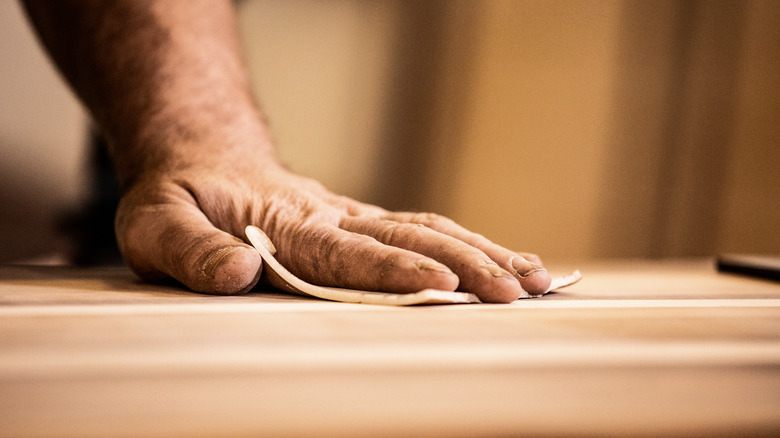Using Baking Soda To Strip Paint From Wood: Miracle Solution Or Big Mistake?
If you take on DIY projects often, chances are there will come a time when you need to remove paint from wood materials or furniture. If the paint has already begun to chip or peel, it may be best to remove what remains and add a fresh coat of paint instead. One solution that's often recommended for stripping paint from wood is baking soda. But does it really work?
If used correctly, baking soda can help you remove paint from wood, but it can be a bit risky. Baking soda can help soften paint, making it easy to remove, and it's more eco-friendly than common chemical paint removers. Despite this, baking soda and wood don't mix well. Baking soda may cause scratching and can damage the sealant of hardwood floors if you leave it on for too long. Use it with caution. Patch-test on a less visible area before using baking soda or any other paint remover on furniture or materials. Think twice before using baking soda on your floor or luxurious materials such as hardwood, and avoid leaving it for prolonged periods.
Using baking soda to strip paint
One option to remove paint from wood is to make a paste out of baking soda. Do this by mixing an equal amount of baking soda and water. Then, apply the paste to the paint with a spatula or brush. You'll need to let the paste sit for about half an hour and give it adequate time to dry. After it's had time to dry, the paint should be much softer and easier to remove, so you can use sandpaper or a scraping tool to lift the paint. However, you may need to repeat this process multiple times to fully remove the paint.
To remove paint from metal and wood hardware and other small items, add a small amount of baking soda to a pot of water. Then, boil the mixture at a medium temperature, ensuring it doesn't get overly hot. Dip smaller items in the pot and let them sit for 20 minutes until the paint begins to bubble. Finally, remove the paint with a brush. You can also try using this heated mixture to remove paint from larger items. Apply with the help of a sponge. Keep in mind that this won't fully remove the paint, but it will help soften it and make it easier to remove with a scraping tool.
Taking the next steps with your wood
Remember that you shouldn't leave baking soda on the paint for too long since it could cause damage to the wood. Ensure that it only stays as long as necessary to do its job. After using baking soda to remove paint from wood, you can move on to the next steps of your project. It's a good idea to use some sandpaper to ensure the surface of the wood is smooth. Sand with the direction of the wood grain to avoid scratches and get the wood ready for any repainting that you'll do.
Once you fully remove the paint from the wood surface, you can repaint your furniture or add a finish. However, don't do this too soon after removing old paint. At a minimum, wait until the surface is dry before adding paint or primer to the wood surface. Then, follow all recommended manufacturing instructions on your paint or primer to get the best possible results.


